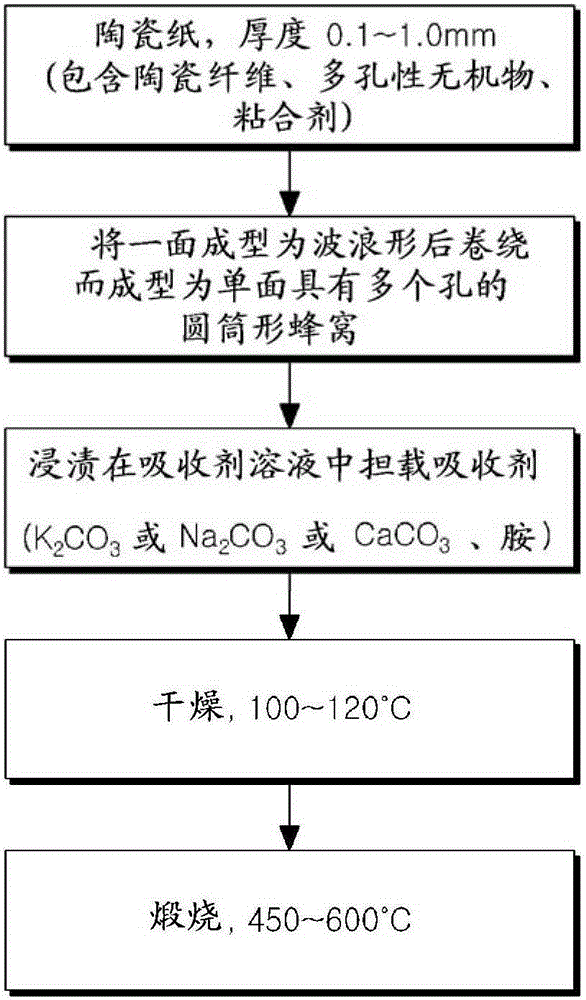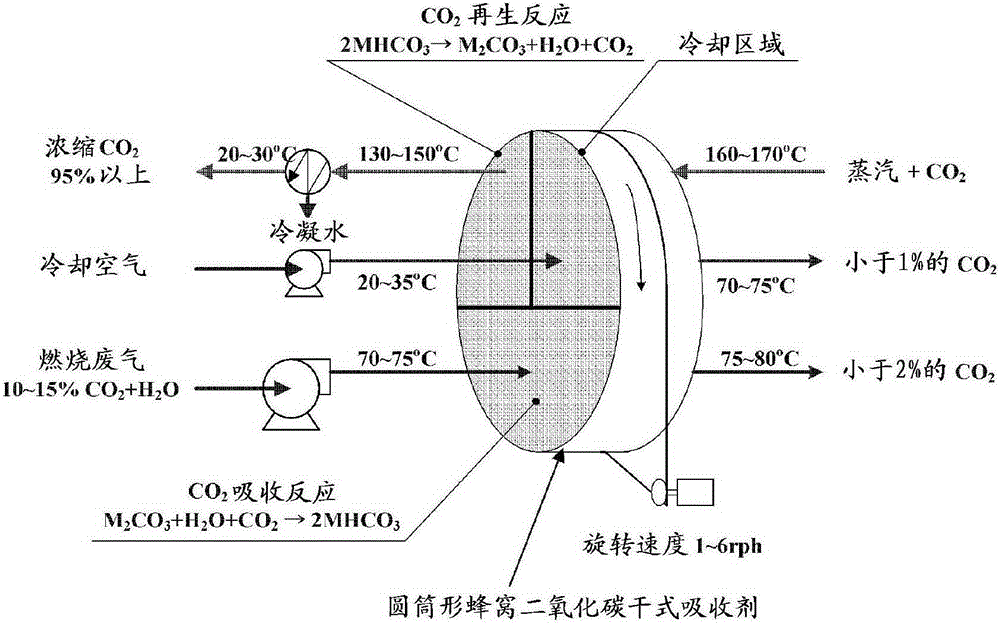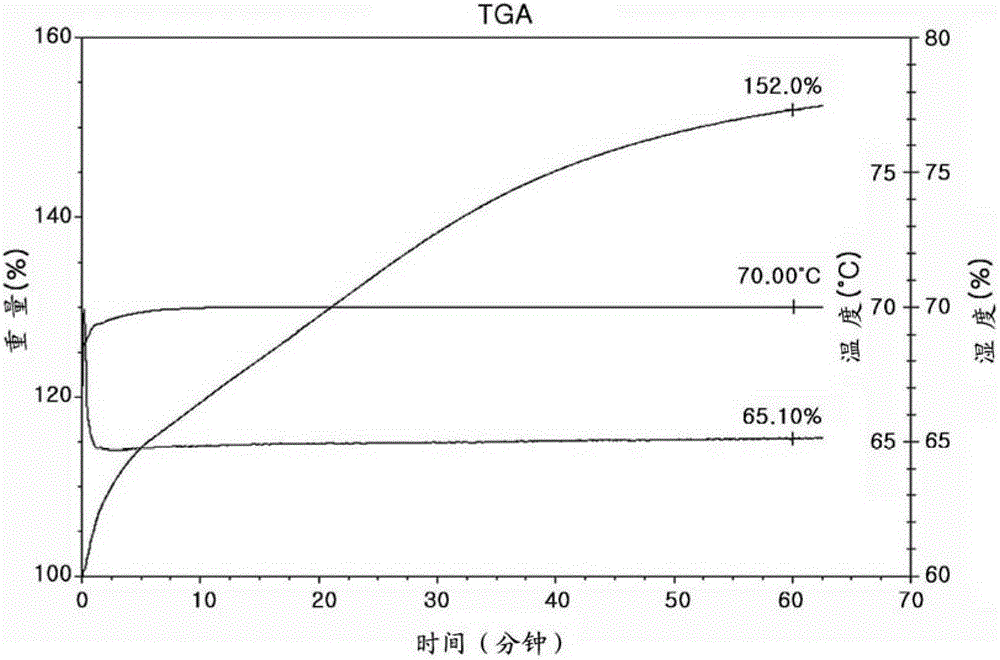Solid carbon dioxide absorbent and method for removing and concentrating carbon dioxide using the same
A technology for solid carbon dioxide and carbon dioxide, applied in chemical instruments and methods, separation methods, reagents, etc., can solve the problems of by-products, corrosion of process materials, and breakage, and achieve the effect of stable removal.
- Summary
- Abstract
- Description
- Claims
- Application Information
AI Technical Summary
Problems solved by technology
Method used
Image
Examples
Embodiment 1
[0044] Embodiment 1: take X-type zeolite as the K-containing 2 CO 3 manufacture of absorbent
[0045] Manufactured containing 50% ceramic fiber, 35% X-type zeolite, 3% PVA as an organic binder, 5% cellulose, 5% sepiolite as an inorganic binder, 2% silica powder and a thickness of 0.21 mm of ceramic paper that can be used at high temperatures above 100°C. Using two sheets of ceramic paper, one of them was molded into a wave shape with a pitch of 3.8 mm and a height of 1.8 mm to produce a single-sided corrugated molded product in the form of corrugated paper. This single-face corrugated molded body was wound to form a cylindrical honeycomb with a diameter of 6 cm and a length of 40 cm, and then dried at 110° C. for 5 hours. Immerse the dried honeycomb in 30% K 2 CO 3 After remaining in the solution for 10 minutes, it was taken out, dehydrated at room temperature, and then dried at 150° C. for 24 hours. will load K 2 CO 3 The post-dried honeycombs were kept at 400°C for 2...
Embodiment 2
[0046] Embodiment 2: with gamma alumina as the K-containing 2 CO 3 manufacture of absorbent
[0047] Manufactured containing 50% ceramic fiber, 35% gamma alumina, 3% PVA as organic binder, 5% cellulose, 5% sepiolite as inorganic binder, 2% silica powder and a thickness of 0.21mm ceramic paper that can be used at high temperatures above 100°C. Subsequent steps were carried out in the same manner as in Example 1.
PUM
| Property | Measurement | Unit |
|---|---|---|
| thickness | aaaaa | aaaaa |
| length | aaaaa | aaaaa |
| thickness | aaaaa | aaaaa |
Abstract
Description
Claims
Application Information
 Login to View More
Login to View More - R&D
- Intellectual Property
- Life Sciences
- Materials
- Tech Scout
- Unparalleled Data Quality
- Higher Quality Content
- 60% Fewer Hallucinations
Browse by: Latest US Patents, China's latest patents, Technical Efficacy Thesaurus, Application Domain, Technology Topic, Popular Technical Reports.
© 2025 PatSnap. All rights reserved.Legal|Privacy policy|Modern Slavery Act Transparency Statement|Sitemap|About US| Contact US: help@patsnap.com



